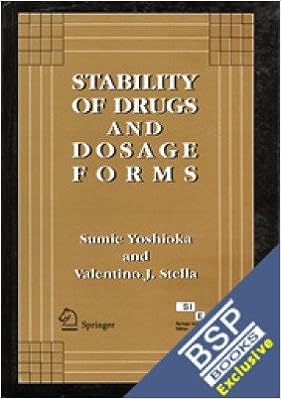Introduction to Humidity Stability
Humidity refers to the moisture content present in the air or environment surrounding pharmaceutical products. It is a critical factor that can impact the stability, quality, and efficacy of drugs, especially those sensitive to moisture.
Impact of Humidity on Drug Stability
Let’s explore how humidity affects the stability of drugs:
1. Chemical Degradation
High humidity levels can accelerate chemical degradation reactions, such as hydrolysis and oxidation, leading to the breakdown of active pharmaceutical ingredients (APIs) and degradation of drug formulations. Moisture can also promote the formation of degradation products and impurities.
2. Physical Changes
Exposure to high humidity can induce physical changes in
3. Microbial Growth
High humidity environments provide favorable conditions for microbial growth and proliferation, increasing
the risk of contamination and spoilage of drug products. Moisture can support the growth of bacteria, fungi, and molds, compromising product quality and safety.4. Stability Testing Conditions
Stability testing protocols typically include humidity as a critical parameter to assess the long-term and accelerated stability of drug products. Different humidity conditions, such as controlled humidity chambers, are evaluated to determine product stability under various storage conditions.
Control and Management of Humidity
To mitigate the impact of humidity on drug stability, pharmaceutical companies implement several strategies:
- Storage Conditions: Products sensitive to humidity are stored in controlled environments with low humidity levels or in moisture-proof packaging to minimize moisture exposure.
- Desiccants: Desiccants, such as silica gel or molecular sieves, are added to packaging to absorb excess moisture and maintain product stability during storage and transportation.
- Humidity Monitoring: Continuous monitoring of humidity levels in storage facilities and distribution channels helps identify and address potential risks of moisture exposure to drug products.
- Stability Testing: Comprehensive stability testing protocols include humidity testing to evaluate the impact of moisture on drug stability and establish appropriate packaging and storage conditions.
